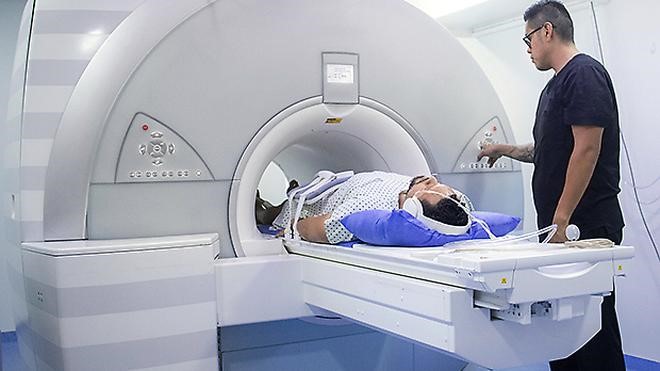
Magnetic Resonance Imaging

08.05.2024
Magnetic Resonance Imaging
|
For Prelims: About Magnetic Resonance Imaging How does MRI Work? The Pros of MRI, The Cons of MRI |
Why in the news?
Magnetic resonance imaging is an indispensable tool for those trying to look inside the human body without surgery.
About Magnetic Resonance Imaging:
- It is used to obtain images of soft tissues within the body. Soft tissue is any tissue that hasn’t become harder through calcification.
- It is a non-invasive diagnostic procedure widely used to image the brain, the cardiovascular system, the spinal cord and joints, various muscles, the liver, arteries, etc.
- Its use is particularly important in the observation and treatment of certain cancers, including prostate and rectal cancer, and to track neurological conditions including Alzheimer’s, dementia, epilepsy, and stroke.
- The MRI technique’s use of strong magnetic fields, individuals with embedded metallic objects (like shrapnel) and metallic implants, including pacemakers, may not be able to undergo MRI scans.
- In the early 1970s, techniques for MRI were developed. Later, it was refined by Paul Lauterbur and Mansfield. Their work led to the Nobel Prize in Medicine in 2003, highlighting MRI's pivotal role in diagnostics.
How does MRI Work?
- An MRI procedure reveals an image of a body part using the hydrogen atoms in that part.
- It uses the body's natural magnetic properties to produce detailed images from any part of the body. For imaging purposes the hydrogen nucleus (a single proton) is used because of its abundance in water and fat.
- The machine includes a superconducting magnet creating a stable magnetic field, aligning hydrogen atom spins. A radiofrequency pulse is emitted, exciting excess atoms.
- When the pulse stops, these atoms emit energy, detected and converted into signals by a receiver. These signals are processed by a computer to generate detailed 2D or 3D images of the scanned body part.
The Pros of MRI:
- An MRI scan can practically image the body from all useful directions. Once the magnetic fields are taken away, the atoms in the scanned part don’t remain affected. This means, MRI scans do not pose any threats to the body.
The Cons of MRI:
- MRI machines are expensive and diagnostic facilities pass this cost on to its patients- each scan often costs Rs 10,000 or more.
- As MRI techniques use strong magnetic fields, individuals with metallic implants (including pacemakers) may not be able to undergo MRI scans. Also, a scan’s effects on pregnant women aren’t well-studied.
Source: The Hindu
Consider the following statements:
Statement-I
Magnetic Resonance Imaging uses the body's natural magnetic properties to generate 2D or 3D images of the scanned body.
Statement-II
It is a non-invasive diagnostic procedure used in the medical field.
Which one of the following is correct in respect of the above statements?
A.Both Statement-I and Statement-II are correct, and Statement-II is the correct explanation for Statement-I.
B.Both Statement-I and Statement-II are correct, and Statement-II is not the correct explanation for Statement-I.
C.Statement-I is correct, but Statement-II is incorrect.
D.Statement-I is incorrect, but Statement-II is correct.
Answer A